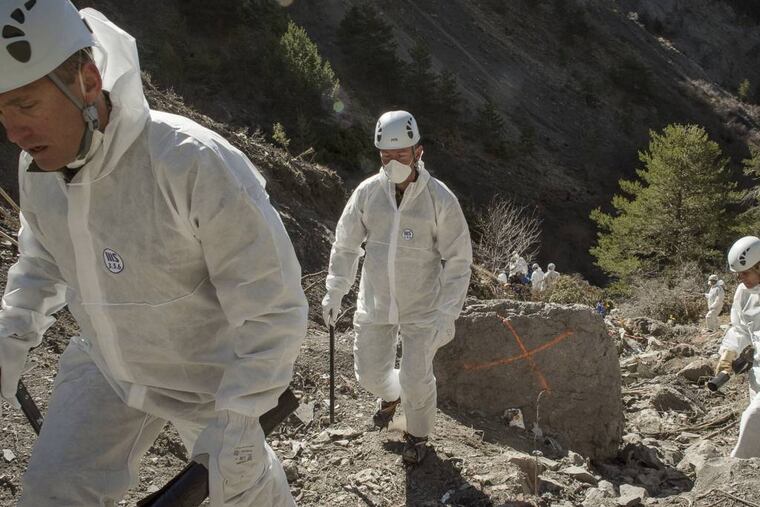'Duty to warn' no guarantee of staying safe
In the wake of the Germanwings crash in Europe last month, the media outcry has focused on the failure of the doctors who treated copilot Andreas Lubitz to notify the Lufthansa hierarchy of his unfitness to fly - if that in fact was their diagnosis.

In the wake of the Germanwings crash in Europe last month, the media outcry has focused on the failure of the doctors who treated copilot Andreas Lubitz to notify the Lufthansa hierarchy of his unfitness to fly - if that in fact was their diagnosis.
Every time there is an incident of violence and any intimation that the perpetrator was mentally ill, concern about the medical community's "duty to warn" and "duty to protect" surfaces. It helps to make sense of senseless tragedies. The thinking goes: If only such and such were done, it wouldn't have happened. Bad things can be prevented if those people would just do their job.
I'm sorry, but there is no way to make the world 100 percent safe. Ever.
All the bike helmets, seat belts, helicopter parenting, and safety equipment and regulations in the world won't keep everyone from harm every day.
In addition, there are major problems with the emphasis on duty to warn or protect. The California Supreme Court emphasized the principle in a 1974 case, Tarasoff v. Regents of the University of California, saying that mental-health professionals have a duty not only to protect their patients, but also anyone threatened by a patient. It is not surprising, then, that the public assumes that all mental-health professionals must warn intended victims and law enforcement of patients' violent tendencies. There are so many errors in this assumption.
First, Tarasoff is a California case, and the rules vary from state to state. There is no federal law.
Health-care providers must follow a variety of ethical codes, professional guidelines, and state and federal laws. The Health Portability and Protection Act of 1996 was enacted to protect the privacy and confidentiality of patients. To release information without a patient's informed consent not only exposes the practitioner to liability; it also doesn't guarantee that a tragedy will be prevented. All too often, disclosure can cause some type of stigma or discrimination for the patient, and it is not a fail-safe strategy for protecting others.
Here's an example: Mr. X tells his therapist that he intends to hurt or kill Mr. Y. The therapist believes him. He notifies Mr. Y to be careful and tells the appropriate law enforcement agency to keep an eye out for Mr. X.
For how long? Days? Weeks? Months? Years?
If Mr. X does nothing, he can potentially sue the therapist for violating his privacy rights. There are no clear standards for how certain therapists must be (nor how they determines this); they have no training or expertise in risk management and can be right about as often as wrong. The requirement is not to assess putative risk, but only to identify explicit and specific threats.
Depending on the patient and situation, there will be as many false positives as false negatives. The best predictor of future behavior is past behavior. Many people, including Lubitz, had no known history of violent acts against himself or others. We know that he had a history of depression, but the vast majority of depressed people harm neither themselves nor others. We have no evidence as to whether Lubitz was medicated (with prescription or recreational drugs) or hallucinating, or whether he had a personality disorder.
Jeffrey Lieberman, a past president of the American Psychiatric Association, asked, How often should mental evaluations be done? With whom should specific information be shared? How so? If a person is mandated by the employer to see a specific provider, then that provider routinely reports to the company and the employee knows that in advance. It's also a reason to avoid company docs.
There are no experts in predicting individual acts of violence; there are only guesses. A far bigger danger - and tragedy - is that most people equate mental illness with violence.
The most important consideration here is the unwillingness of people with mental and emotional concerns to seek, obtain, and remain in treatment. If a person has violent fantasies or thoughts, we should encourage that person to be treated by a competent professional. Since those professionals are required to inform patients of the limits of confidentiality when treatment begins, including any legal mandates concerning a duty to warn, the most likely outcome would be to discourage the very people who need treatment most.
We see this even in the facts of Tarasoff itself. If the doctor in the case had not notified authorities, the perpetrator might have remained in therapy and the victim might not have been killed. Max Siegel, a past president of the American Psychological Association, was vehemently against the Tarasoff ruling as early as 1979. Just last year, Donald Bersoff, another APA past president, called Tarasoff "bad law, bad social science, and bad social policy."
We don't like to deal with uncertainty, but that's the only certain thing about life.